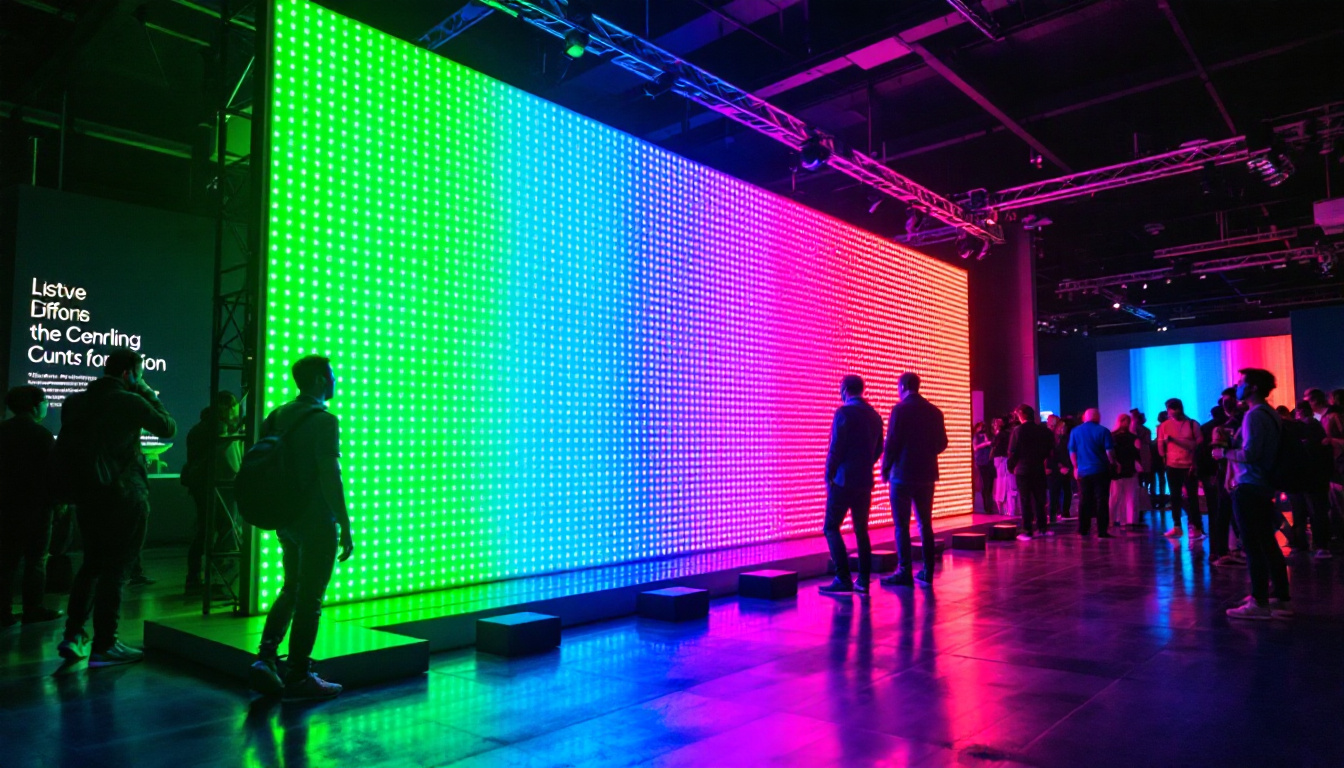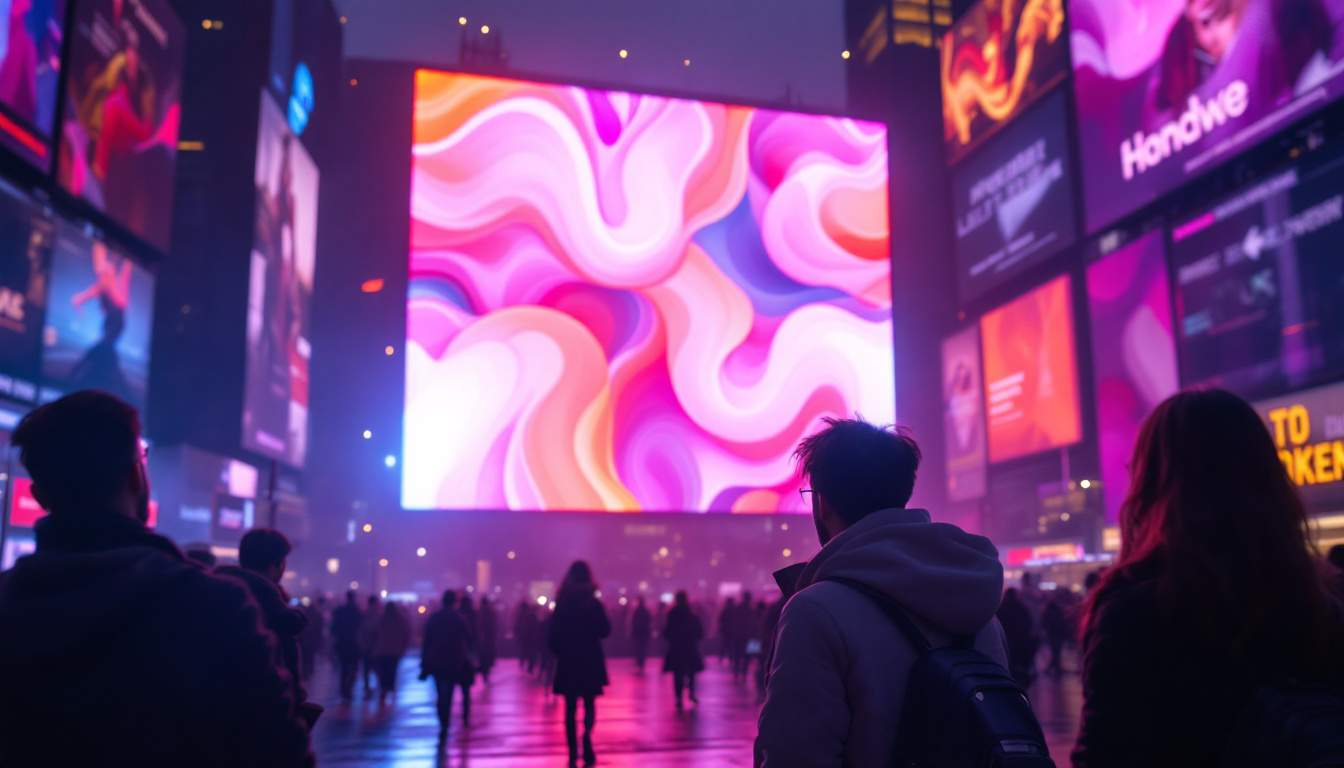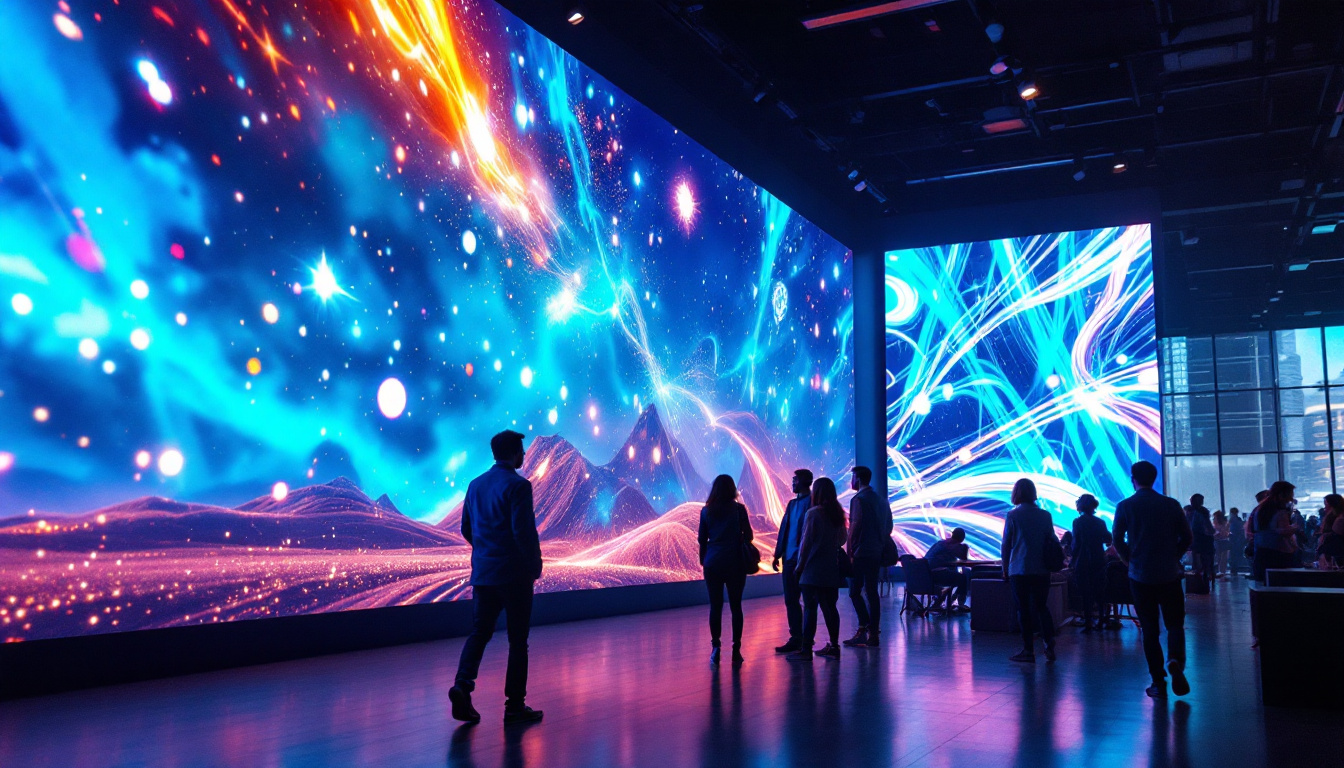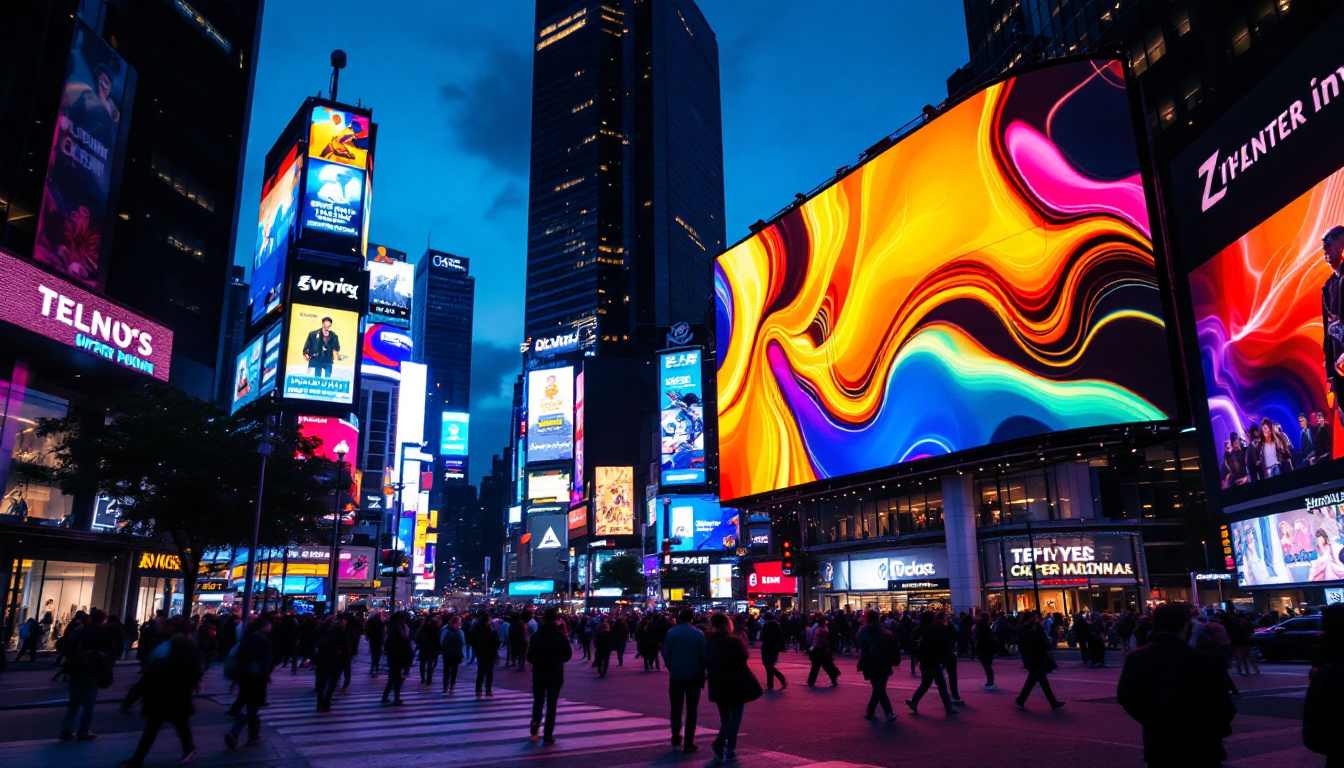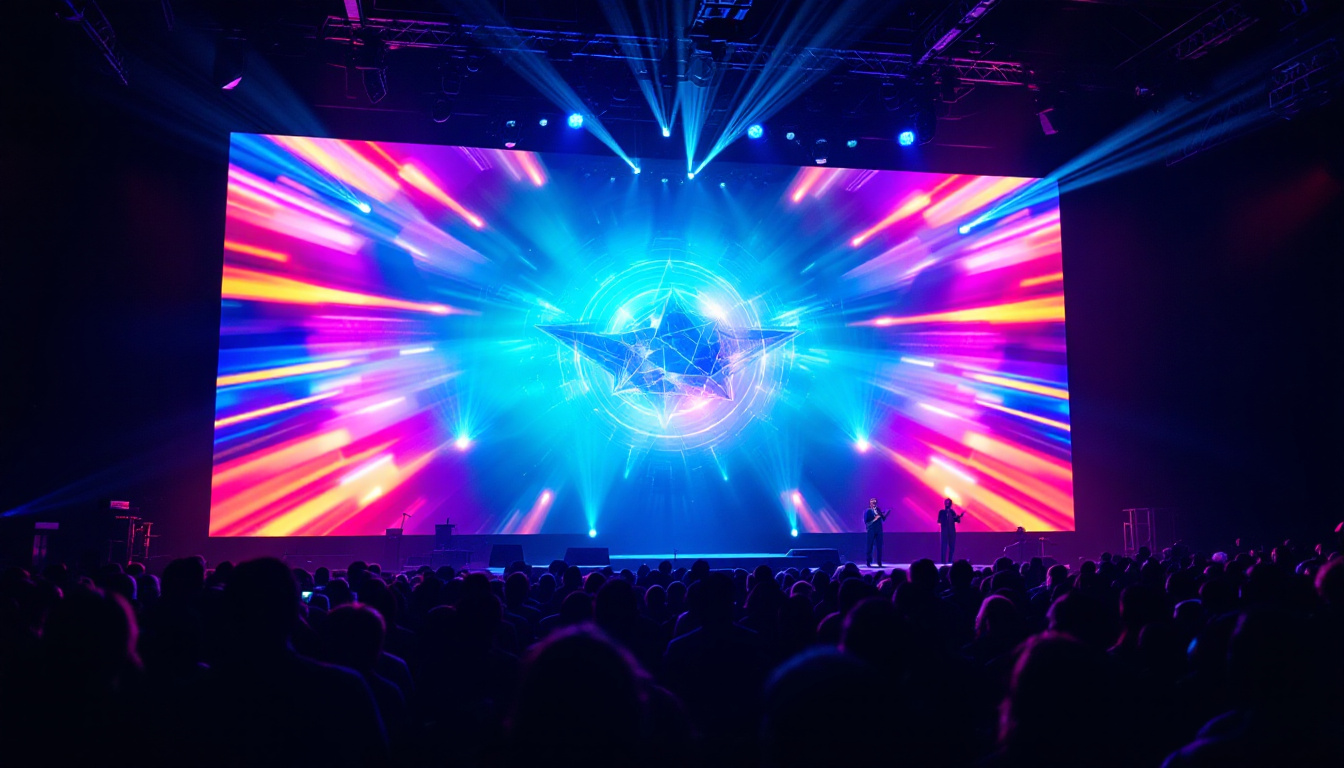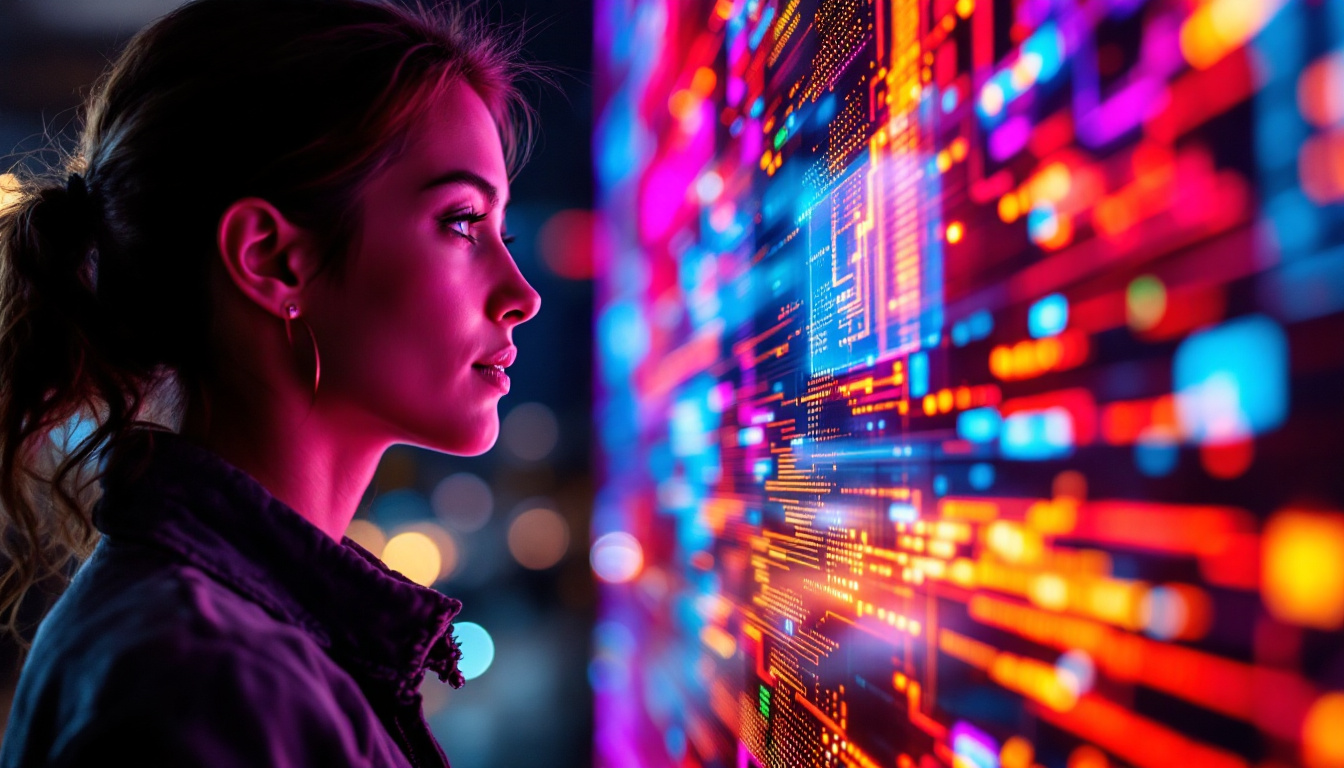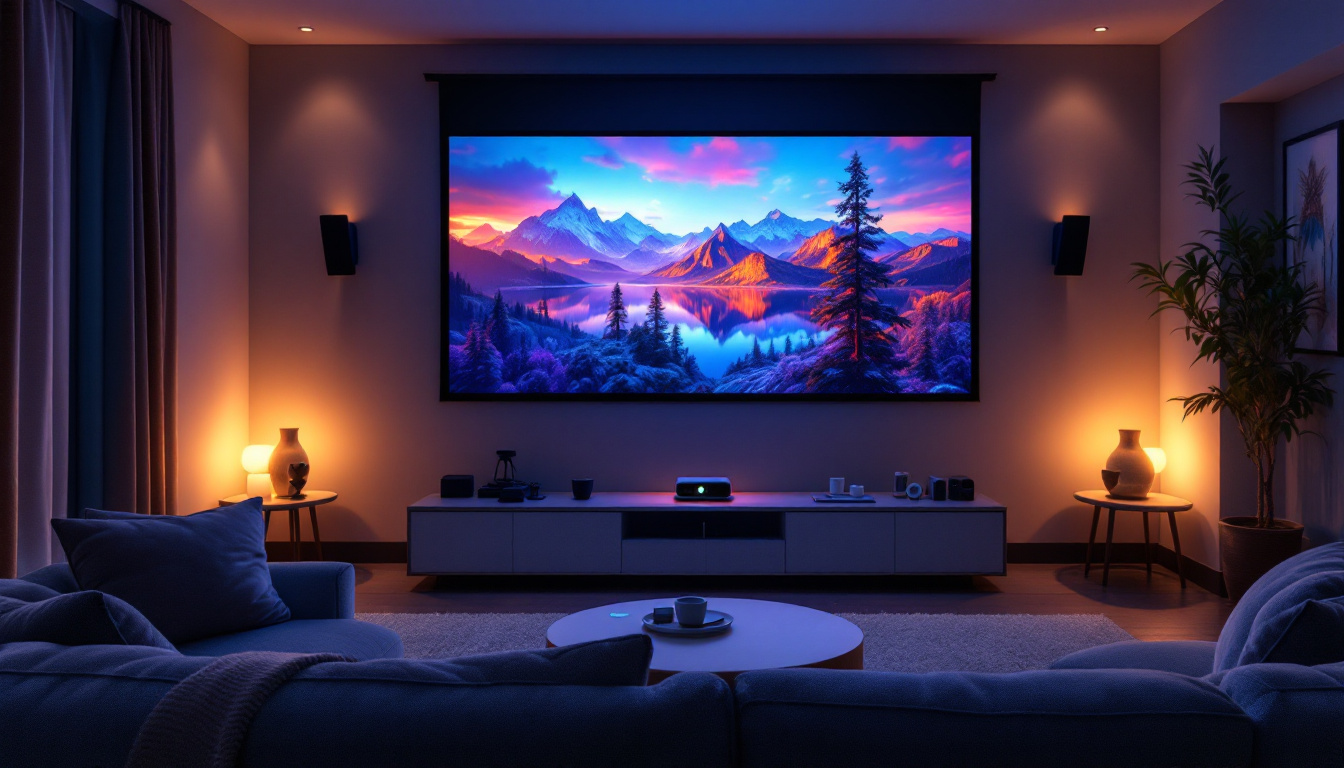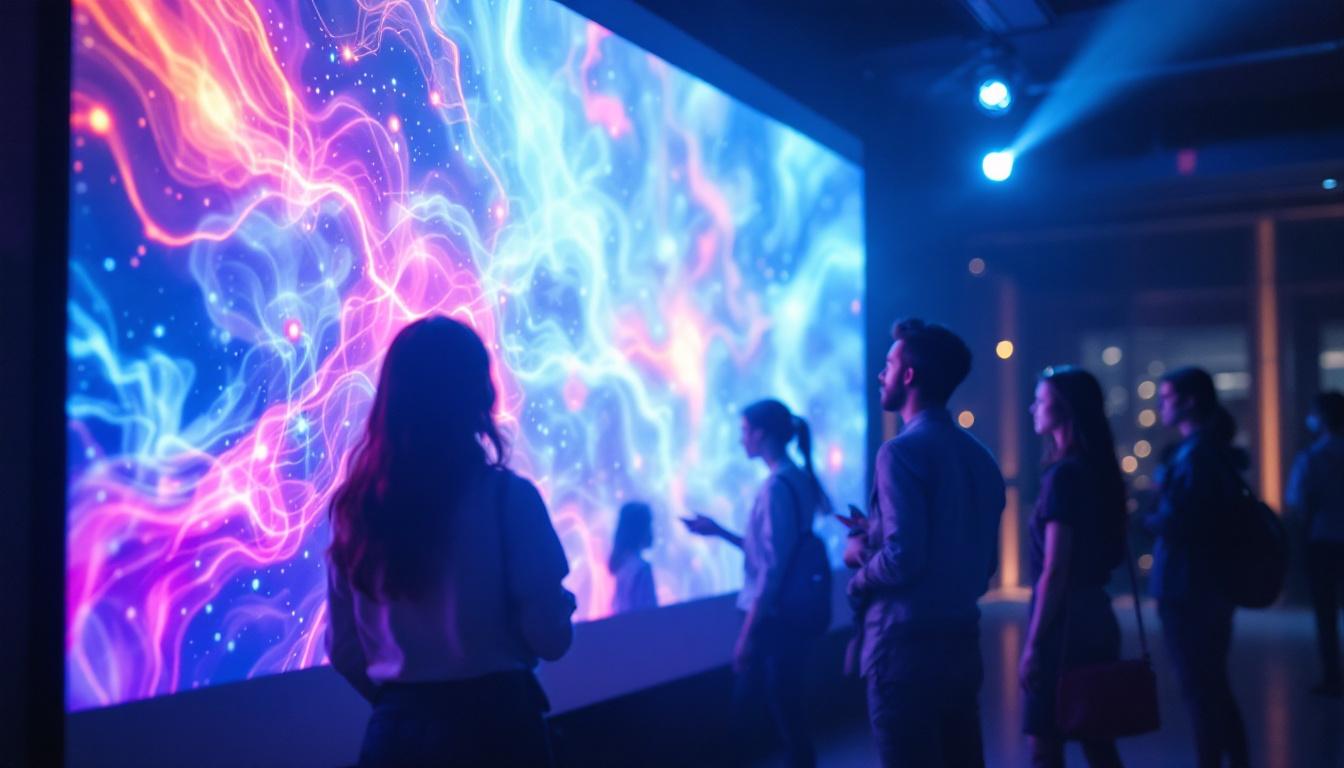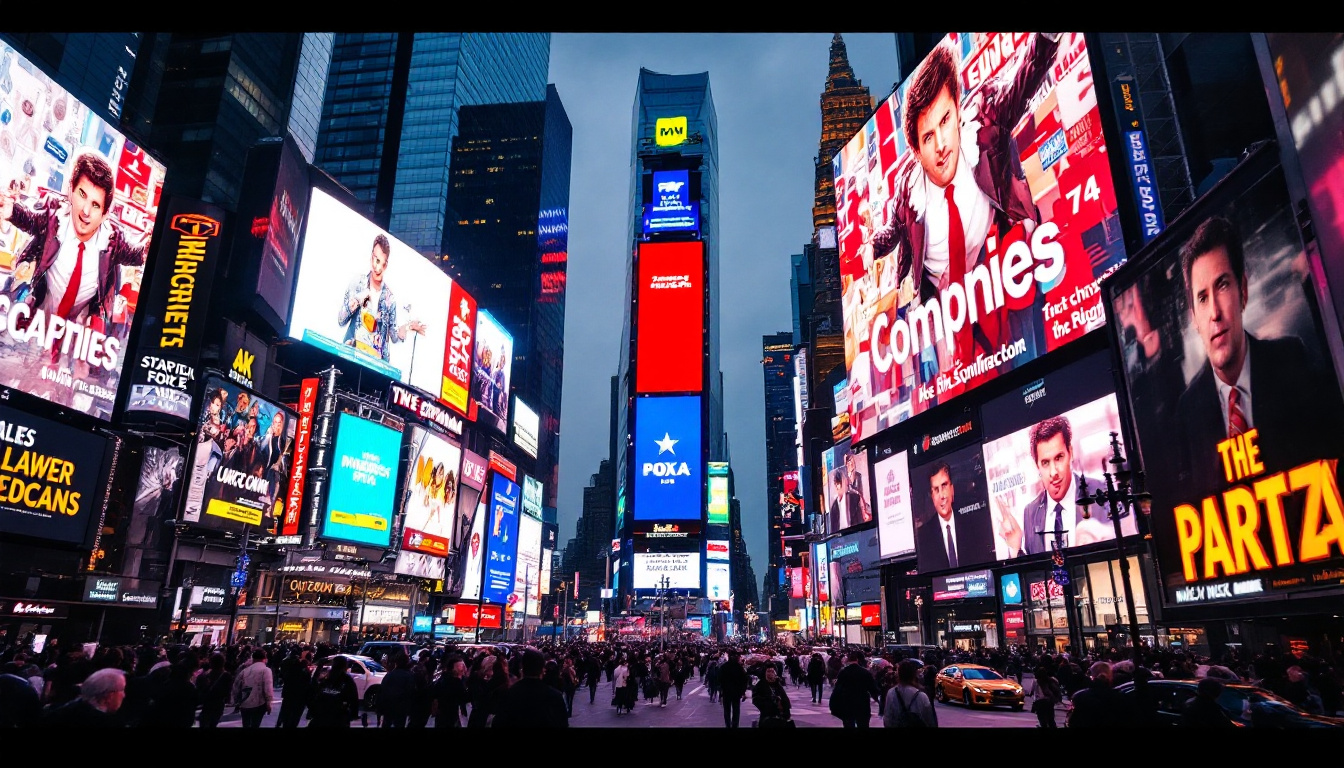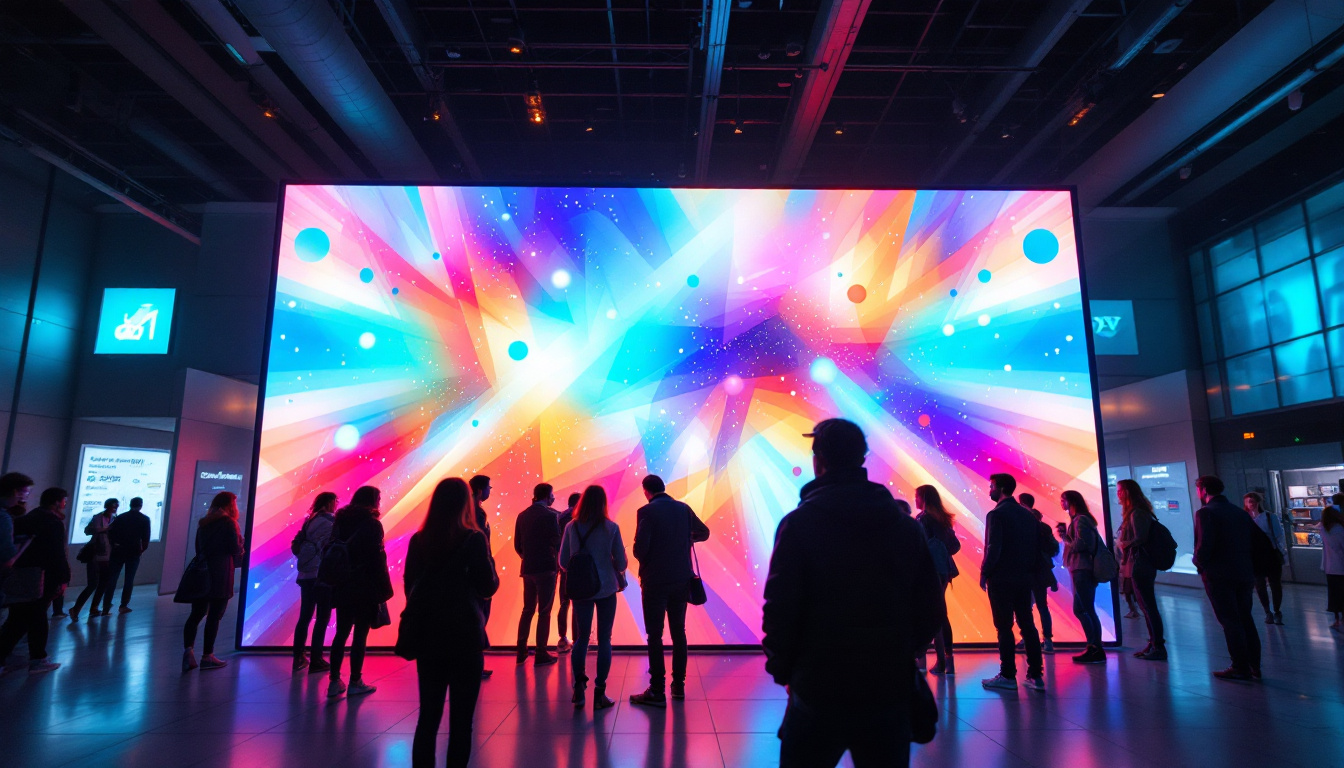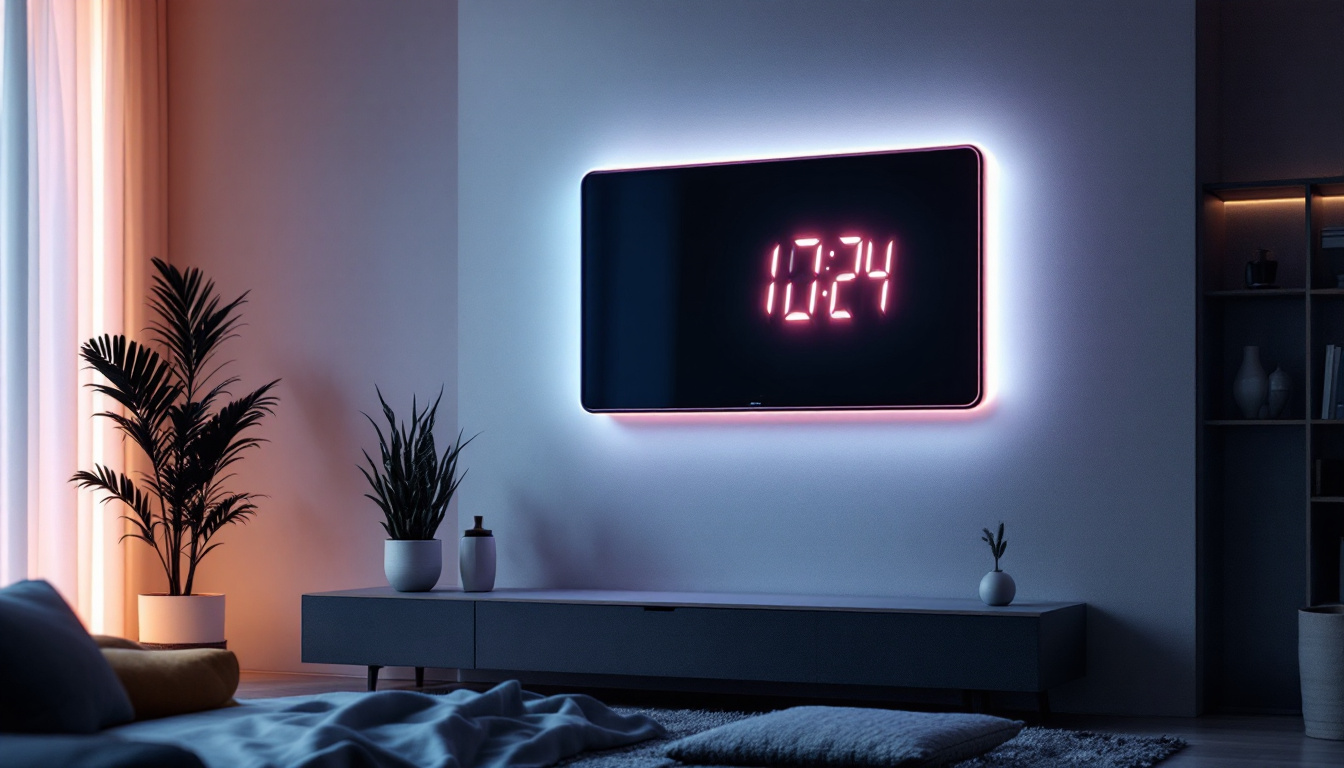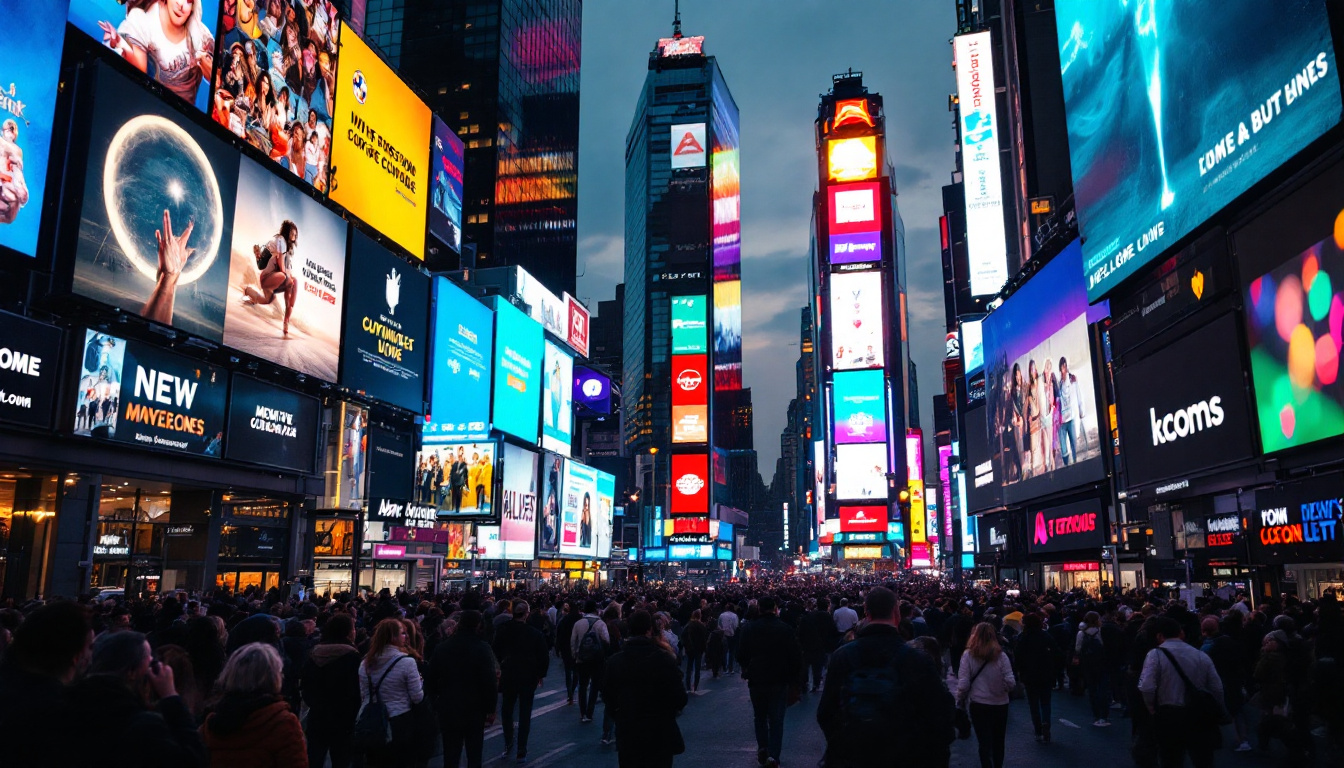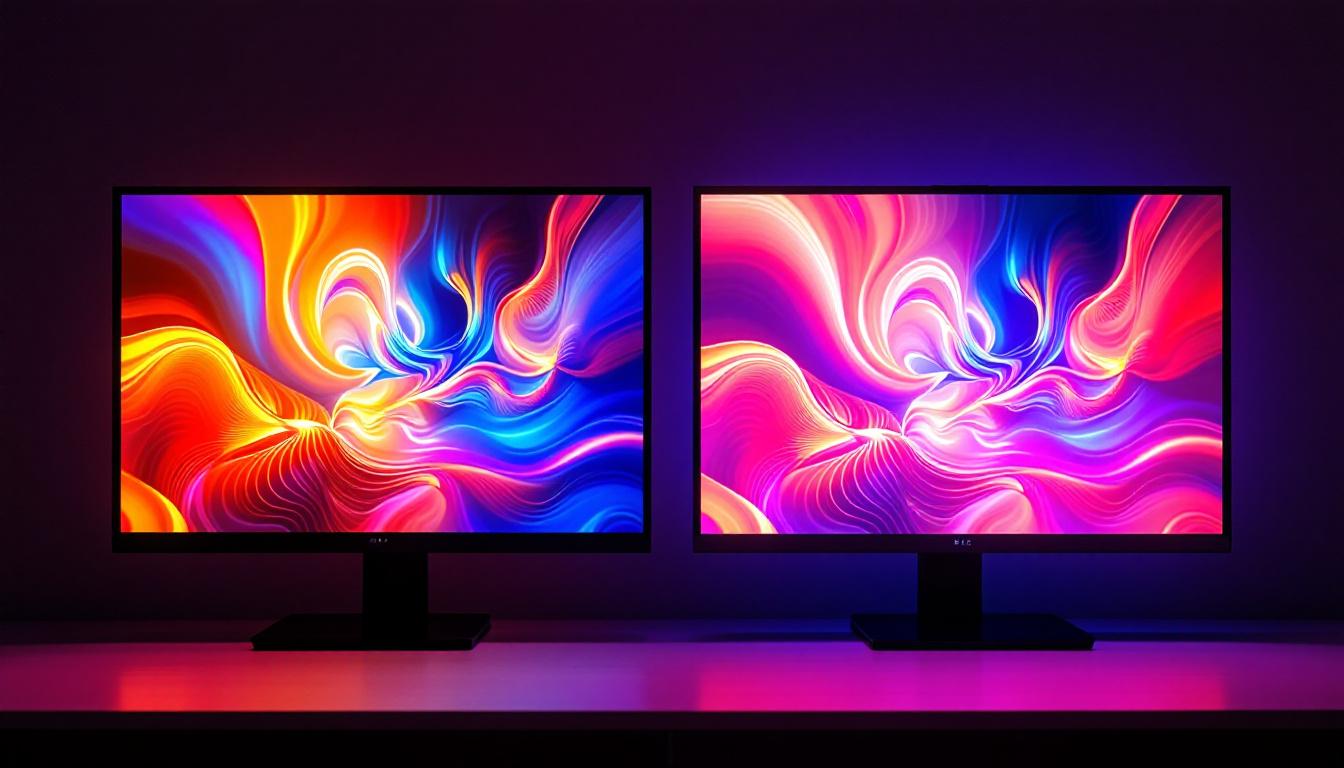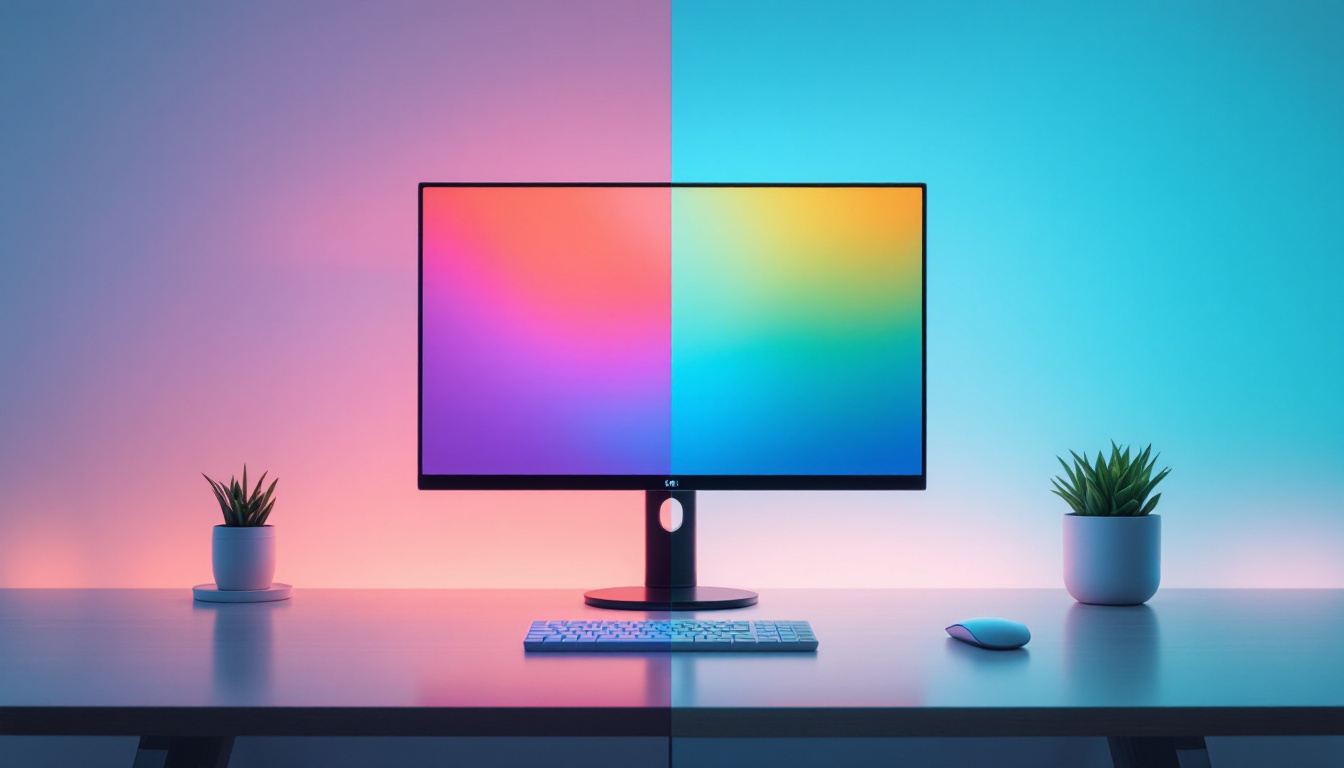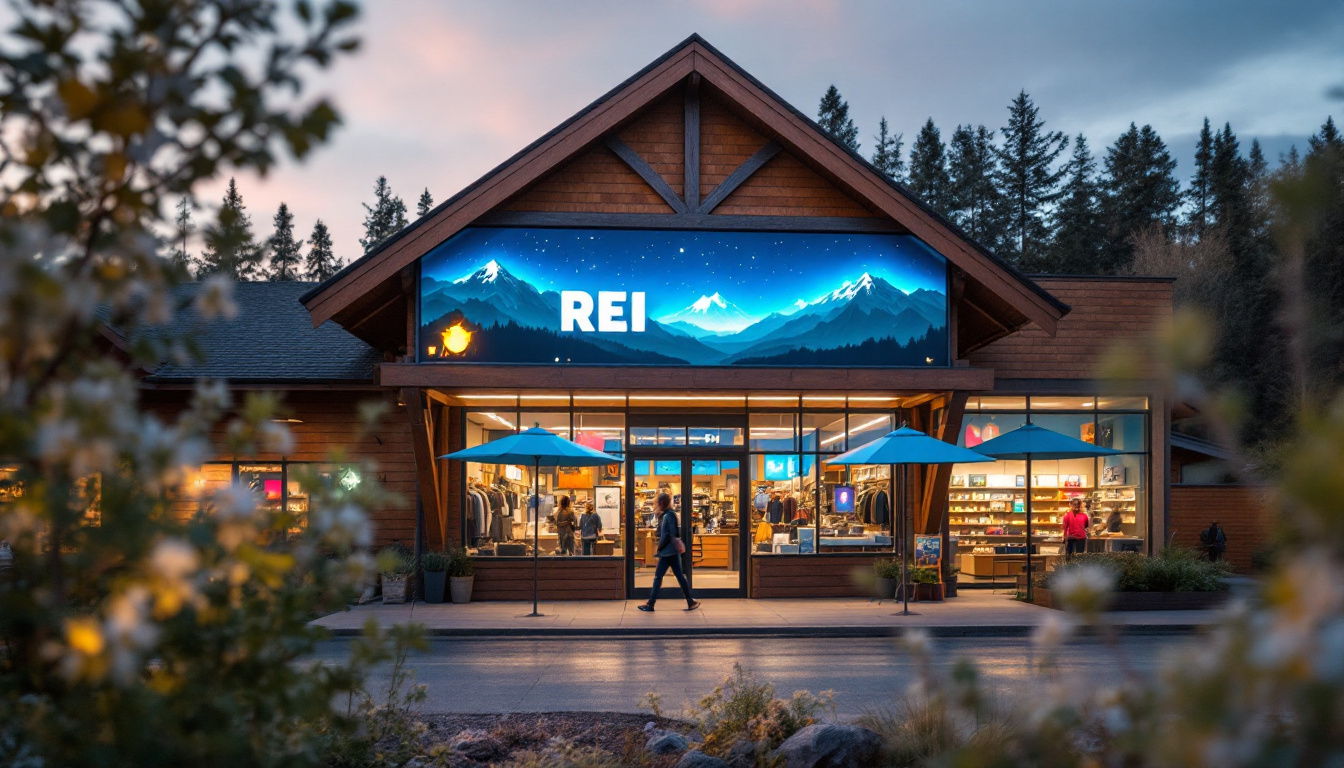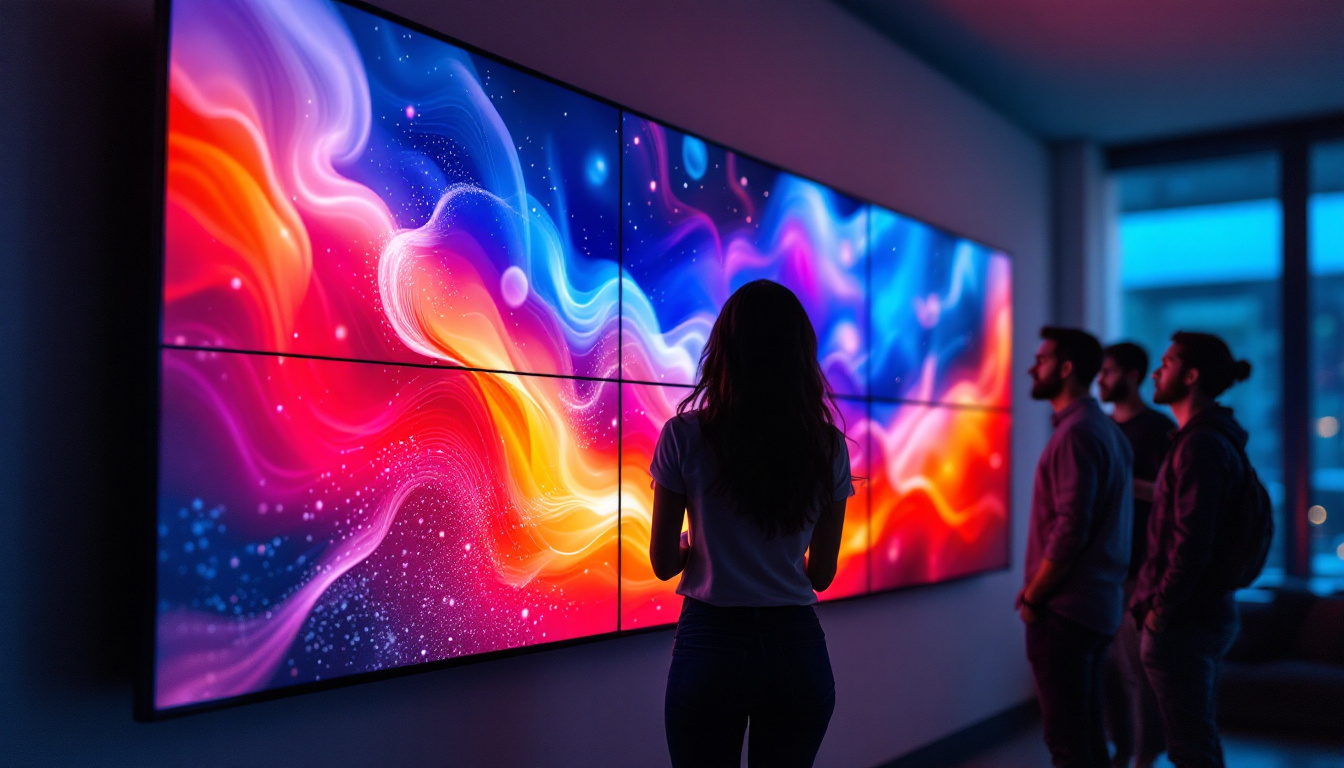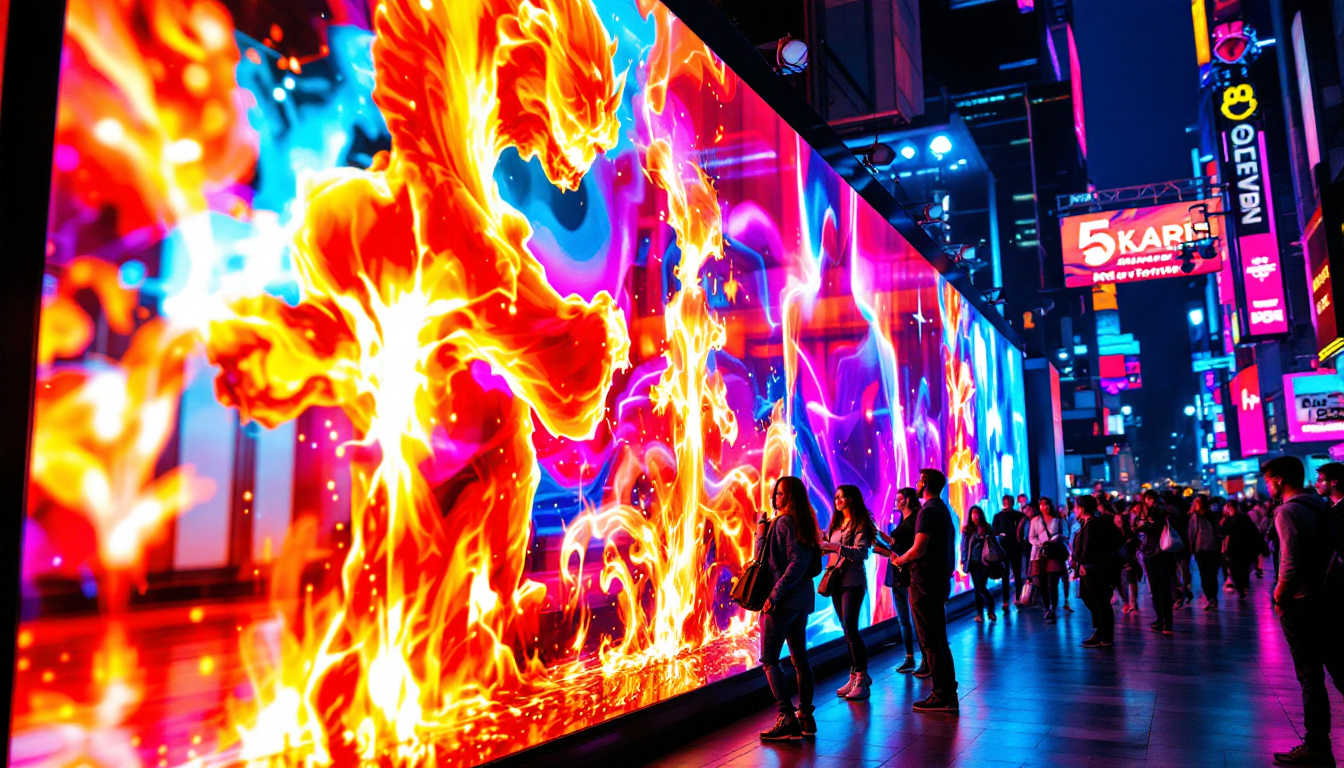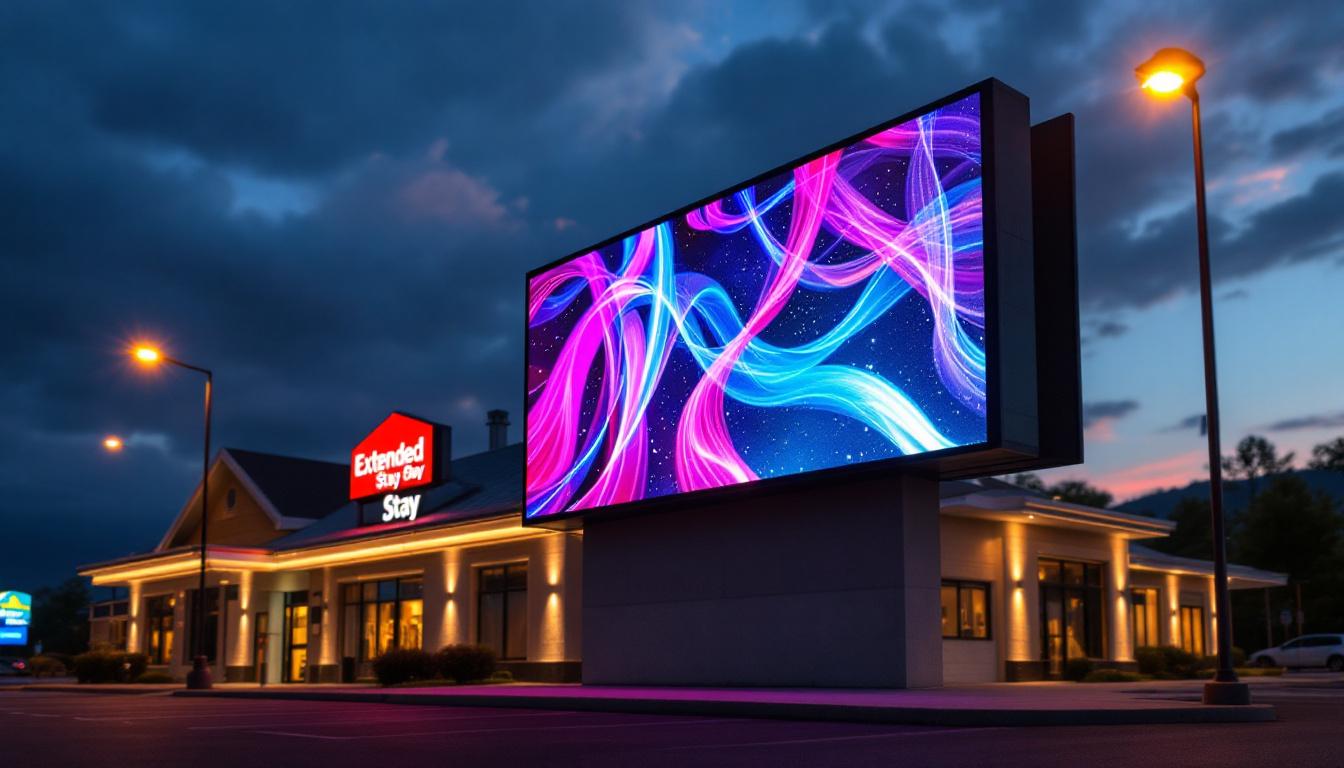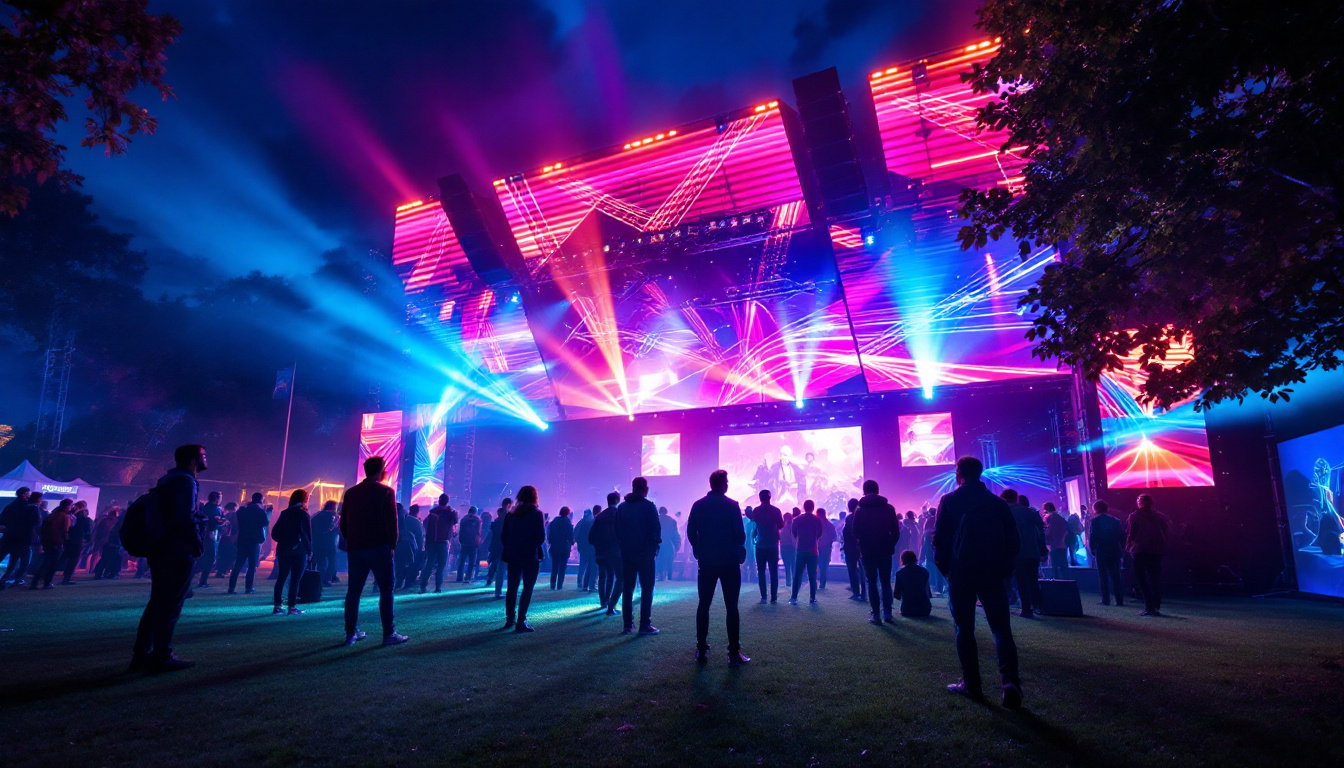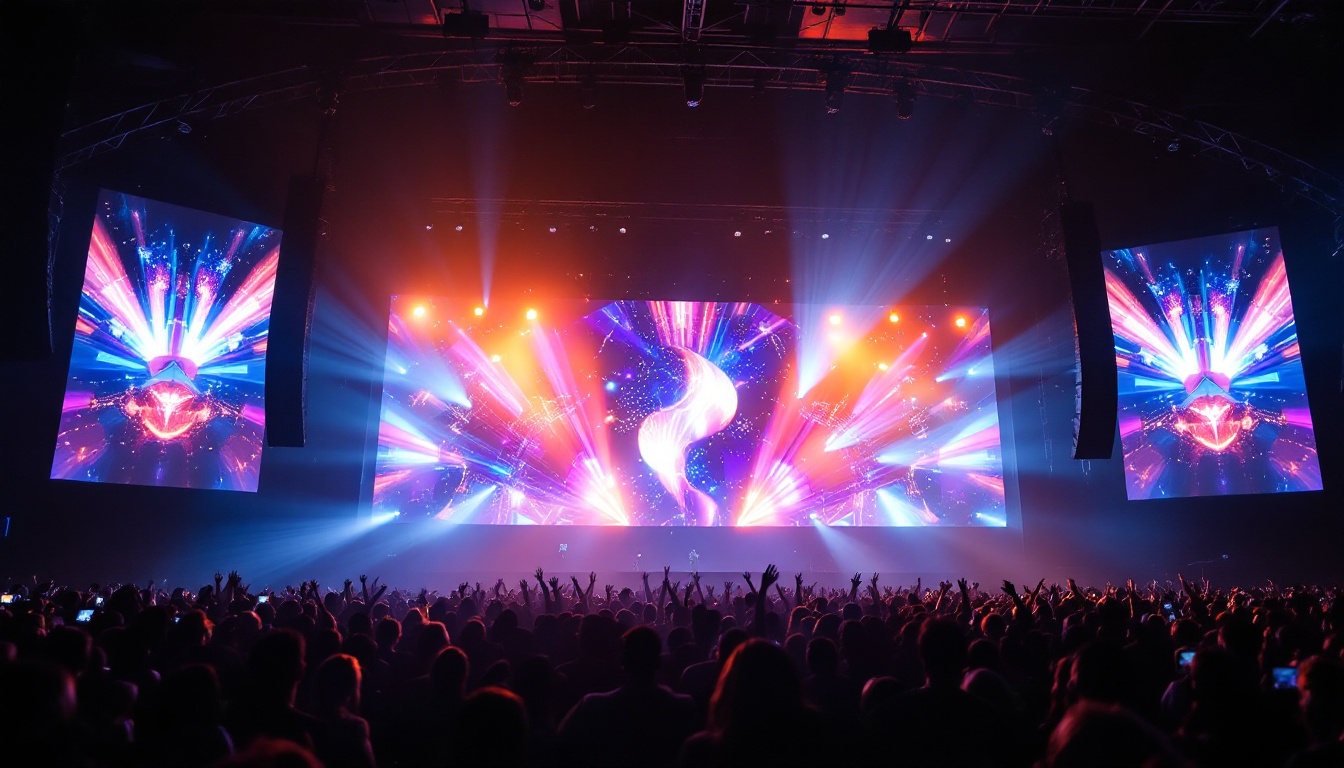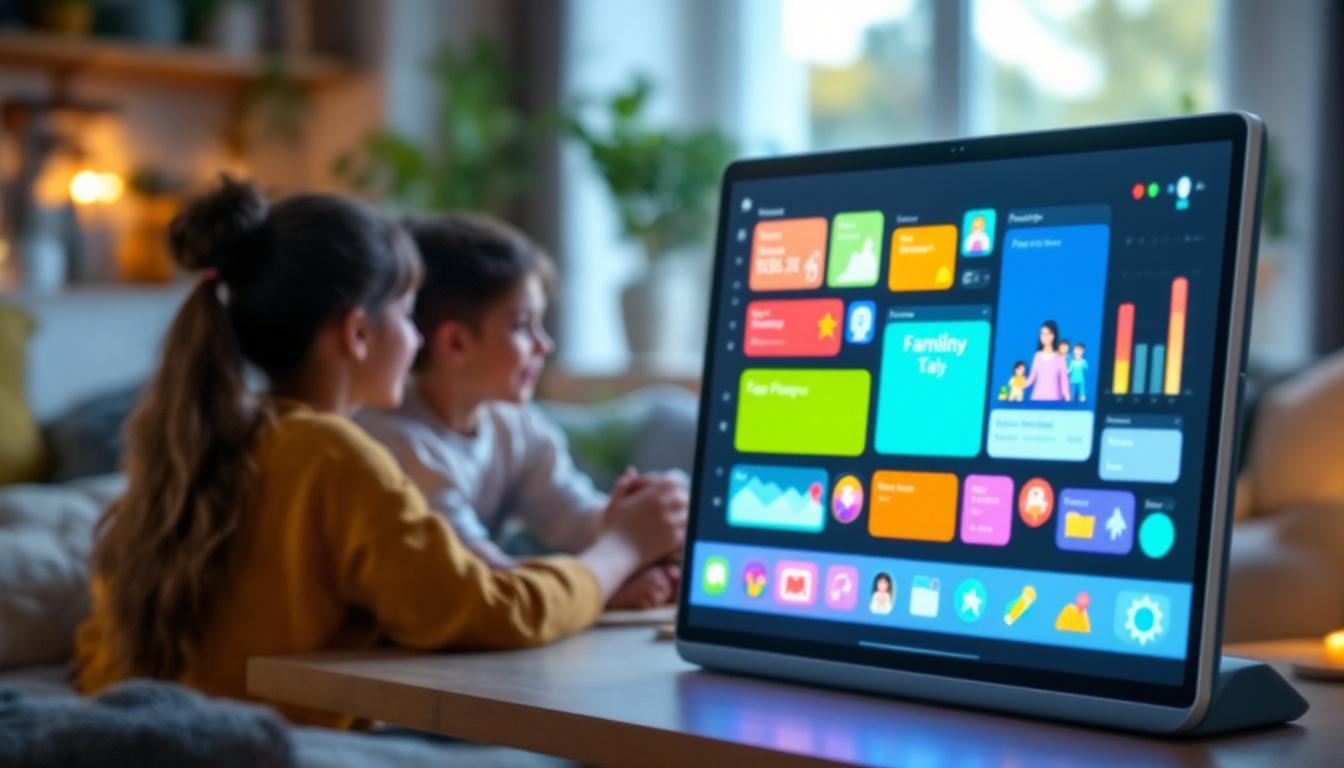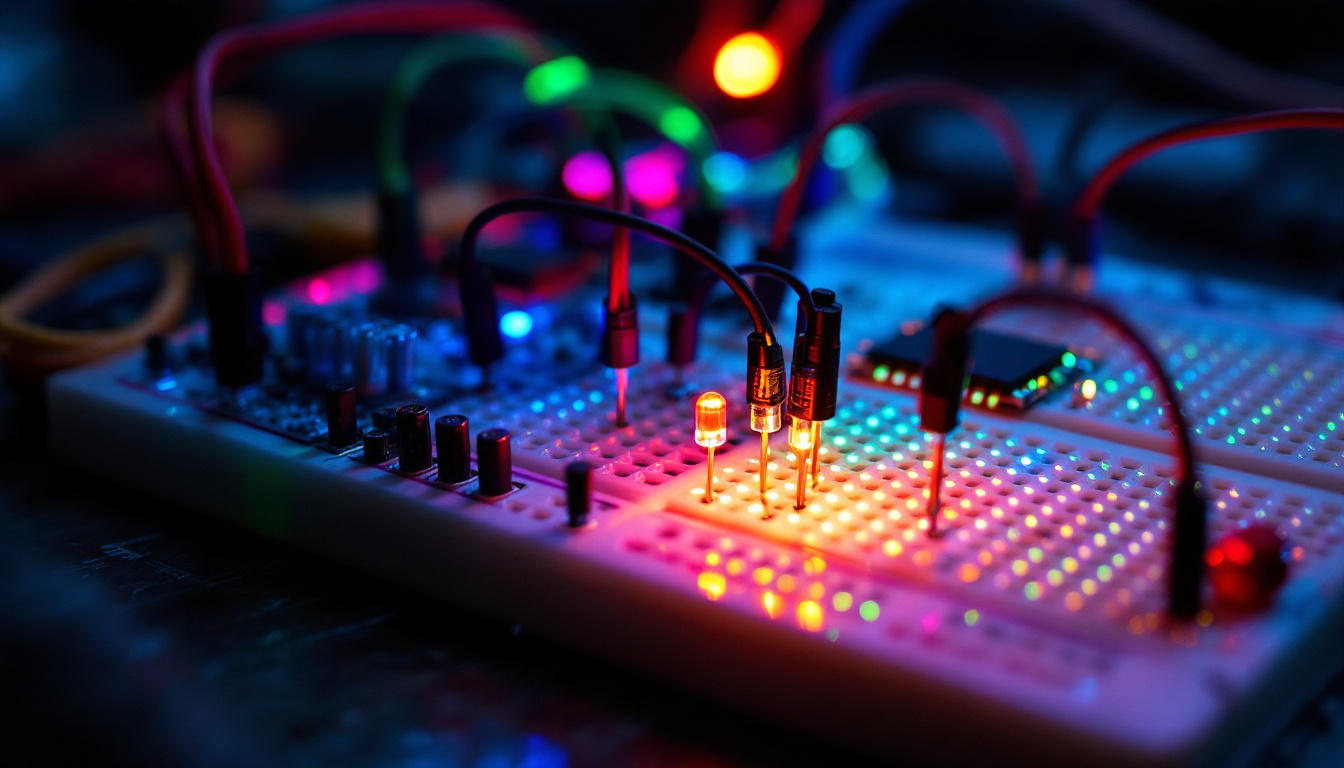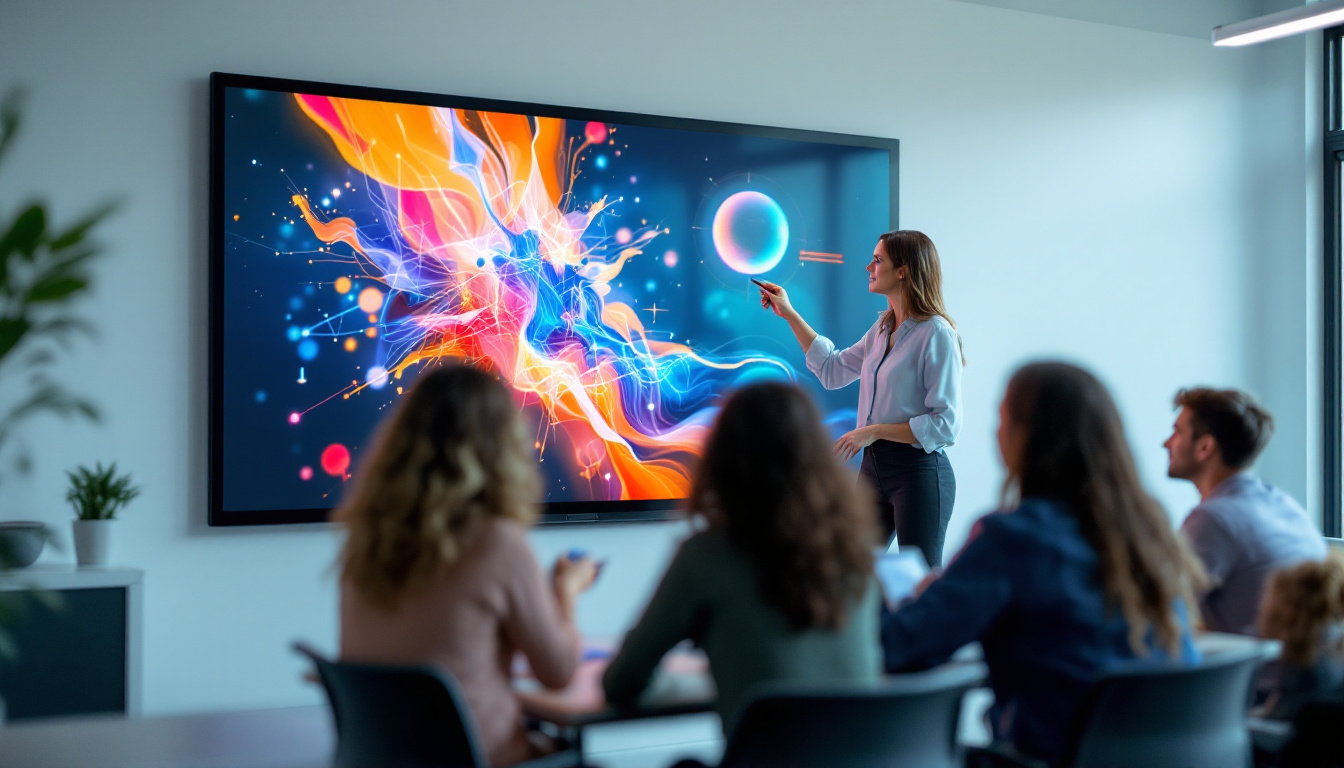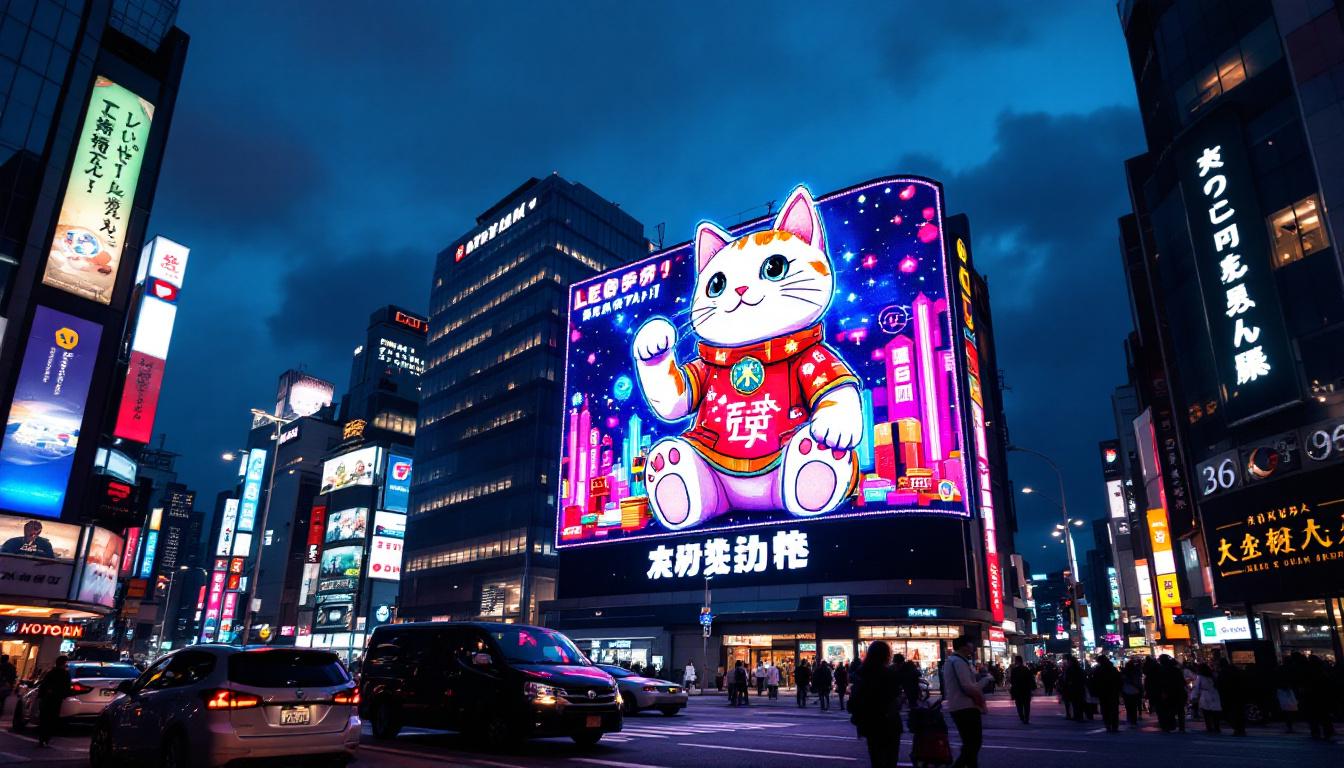Flexible LED Panels: LED Display Explained
In the rapidly evolving world of display technology, flexible LED panels have emerged as a revolutionary solution for a variety of applications. These innovative displays offer unparalleled versatility, allowing for creative installations that were previously unimaginable. This article delves into the intricacies of flexible LED panels, exploring their design, applications, benefits, and future potential.
Understanding Flexible LED Panels
Flexible LED panels are designed to bend and conform to various shapes and surfaces, making them distinct from traditional rigid LED displays. This flexibility is achieved through advanced manufacturing techniques and materials that allow the panels to maintain their functionality while adapting to different environments.
What Are Flexible LED Panels?
At their core, flexible LED panels consist of an array of light-emitting diodes (LEDs) mounted on a flexible substrate. This substrate can be made from materials such as silicone or polymer, which not only provide flexibility but also enhance durability. The ability to bend and curve makes these panels ideal for creative applications, including artistic installations, architectural features, and even wearable technology. In addition to their aesthetic appeal, flexible LED panels are increasingly being used in innovative ways, such as in automotive lighting and interactive displays, where their ability to conform to surfaces can create unique user experiences.
How Do They Work?
Flexible LED panels operate on the same principles as traditional LED displays. Each panel is composed of numerous tiny LEDs that emit light when an electric current passes through them. These LEDs can be individually controlled, allowing for dynamic visual effects and animations. The flexibility of the panels does not compromise their brightness or color quality, making them suitable for both indoor and outdoor use. Furthermore, the technology behind these panels has evolved to include features such as programmable color changes and integration with smart systems, enabling them to respond to environmental factors or user interactions. This adaptability opens up a world of possibilities for designers and engineers looking to push the boundaries of visual communication.
Applications of Flexible LED Panels
The versatility of flexible LED panels opens the door to a wide range of applications across various industries. Their unique properties allow for innovative uses that enhance visual experiences and engage audiences in new ways.
Advertising and Marketing
One of the most prominent applications of flexible LED panels is in advertising and marketing. Brands are increasingly using these displays to create eye-catching advertisements that can be installed on unconventional surfaces, such as curved walls or vehicles. The ability to display vibrant colors and dynamic content helps capture the attention of consumers in crowded environments. Additionally, the adaptability of these panels means that they can be easily updated with new content, allowing brands to keep their messaging fresh and relevant. This flexibility not only maximizes the impact of advertising campaigns but also reduces the need for physical materials, contributing to more sustainable marketing practices.
Architectural Installations
Flexible LED panels are also making waves in the architecture and design sectors. Architects and designers are utilizing these panels to create stunning visual features in buildings. From curved facades to immersive interior displays, flexible LED panels can transform ordinary spaces into extraordinary visual experiences. Their lightweight nature allows for easier installation and integration into existing structures. Moreover, these panels can be programmed to change colors and patterns, providing a dynamic element to static architecture. This capability enables the creation of environments that can shift in mood or theme, enhancing the functionality of spaces such as galleries, museums, and corporate offices.
Events and Entertainment
In the events and entertainment industry, flexible LED panels have become a staple for creating immersive environments. Concerts, festivals, and exhibitions often feature these displays to enhance the overall experience for attendees. Their ability to bend and shape into various forms allows for creative stage designs and interactive installations that engage audiences on multiple levels. Beyond just visual effects, these panels can also be synchronized with sound and lighting to create a cohesive sensory experience. This integration not only captivates audiences but also elevates the storytelling aspect of performances, making each event memorable. Furthermore, as technology advances, the potential for incorporating augmented reality elements into flexible LED displays is becoming increasingly feasible, paving the way for even more innovative applications in the future.
Benefits of Flexible LED Panels
Investing in flexible LED panels comes with a multitude of advantages that set them apart from traditional display technologies. Understanding these benefits can help businesses and organizations make informed decisions about their display needs.
Versatility and Adaptability
One of the most significant benefits of flexible LED panels is their versatility. They can be used in a variety of settings, from retail spaces to art installations. Their ability to adapt to different shapes and surfaces means that they can be customized to fit any design vision. This adaptability not only enhances creativity but also allows for unique branding opportunities. For instance, a retail store can create a stunning visual experience by wrapping flexible LED panels around pillars or integrating them into unconventional layouts, thus capturing the attention of potential customers in a crowded marketplace.
Moreover, flexible LED panels can be utilized for dynamic advertising, where content can be easily updated to reflect seasonal promotions or new product launches. This capability ensures that businesses can keep their messaging fresh and relevant, engaging customers in ways that static displays simply cannot match. The seamless integration of these panels into architectural designs also opens up possibilities for interactive displays, further enhancing customer engagement and interaction.
Lightweight and Easy to Install
Flexible LED panels are typically much lighter than traditional LED displays, making them easier to transport and install. This lightweight nature reduces installation costs and time, allowing for quicker deployment in various environments. Additionally, their flexibility means they can be installed in locations that may not support heavier, rigid displays. This is particularly advantageous for temporary setups, such as events and exhibitions, where ease of installation and removal is crucial.
Furthermore, the installation process is often simplified due to the panels’ modular design, which allows for easy connection and disconnection. This feature not only speeds up the setup but also provides the option for businesses to scale their displays according to their needs, whether they require a small setup for an intimate event or a large installation for a major launch. The ability to easily reconfigure these displays also means that businesses can adapt to changing environments and audience sizes without incurring significant additional costs.
Energy Efficiency
Energy efficiency is another critical advantage of flexible LED panels. LEDs are known for their low power consumption compared to traditional lighting technologies. Flexible LED panels maintain this efficiency, making them an environmentally friendly choice for businesses looking to reduce their carbon footprint. This energy efficiency also translates to lower operational costs over time. In fact, many businesses have reported significant savings on their energy bills after switching to LED technology, which can be reinvested into other areas of the organization.
Additionally, the longevity of flexible LED panels contributes to their overall cost-effectiveness. With a lifespan that often exceeds 50,000 hours, these panels require less frequent replacements, further minimizing waste and the need for ongoing maintenance. This durability not only benefits the environment but also ensures that businesses can rely on their displays for extended periods without the constant worry of downtime or additional expenses. As sustainability becomes increasingly important in today’s market, the energy-efficient nature of flexible LED panels positions them as a forward-thinking choice for organizations committed to eco-friendly practices.
Challenges and Considerations
While flexible LED panels offer numerous benefits, there are also challenges and considerations that potential users should be aware of. Understanding these factors can help in making the right choice for specific applications.
Cost Implications
One of the primary challenges associated with flexible LED panels is their cost. Compared to traditional LED displays, flexible panels can be more expensive due to the advanced technology and materials used in their production. Businesses must weigh the initial investment against the potential benefits and long-term savings to determine if flexible LED panels are the right choice for their needs.
Durability and Maintenance
Although flexible LED panels are designed to be durable, they may be more susceptible to damage than their rigid counterparts. This susceptibility can be a concern in high-traffic areas or environments where the panels may be exposed to physical stress. Regular maintenance and careful handling are essential to ensure the longevity of these displays.
Technical Limitations
Flexible LED panels, while innovative, may have some technical limitations compared to traditional displays. For instance, the resolution of flexible panels may not always match that of high-end rigid displays, which can impact image quality in certain applications. Users should assess their specific requirements and determine if flexible panels meet their expectations in terms of resolution and visual clarity.
Future Trends in Flexible LED Technology
The future of flexible LED panels looks promising, with ongoing advancements in technology and design. As the demand for innovative display solutions continues to grow, several trends are emerging that could shape the future of flexible LED technology.
Integration with Smart Technology
One of the most significant trends is the integration of flexible LED panels with smart technology. As the Internet of Things (IoT) continues to expand, flexible displays can be connected to various devices and systems, allowing for real-time content updates and interactive experiences. This integration opens up new possibilities for personalized advertising and dynamic content delivery.
Enhanced Resolution and Quality
Advancements in manufacturing techniques are also leading to improvements in the resolution and quality of flexible LED panels. As technology evolves, it is expected that these displays will offer higher pixel densities, resulting in sharper images and more vibrant colors. This enhancement will make flexible LED panels even more appealing for applications requiring high-quality visuals.
Sustainability and Eco-Friendly Solutions
With increasing awareness of environmental issues, there is a growing emphasis on sustainability in display technology. Future developments in flexible LED panels may focus on using eco-friendly materials and manufacturing processes. This shift towards sustainability will not only benefit the environment but also appeal to consumers and businesses looking to align with green initiatives.
Conclusion
Flexible LED panels represent a significant advancement in display technology, offering unparalleled versatility and creativity for various applications. Their ability to adapt to different shapes and surfaces, combined with energy efficiency and lightweight design, makes them an attractive option for businesses and organizations seeking innovative solutions.
While challenges such as cost and durability exist, the benefits often outweigh these concerns, especially as technology continues to evolve. As flexible LED panels become more integrated with smart technology and sustainable practices, their potential will only expand further.
In a world where visual communication is more important than ever, flexible LED panels are poised to play a crucial role in shaping the future of display technology. Whether in advertising, architecture, or entertainment, these displays are set to redefine how audiences engage with visual content.
Discover the Future of LED Displays with LumenMatrix
Ready to take your visual communication to the next level? Explore LumenMatrix’s comprehensive range of innovative LED display solutions tailored to your unique needs. From immersive Indoor and Outdoor LED Wall Displays to dynamic Vehicle LED Displays, and from sleek LED Poster Displays to engaging LED Sports and Floor Displays, LumenMatrix has the technology to bring your vision to life. Embrace the future with Custom, All-in-One, and LED Transparent Displays that captivate and engage. Check out LumenMatrix LED Display Solutions today and transform your space into a visual masterpiece.

